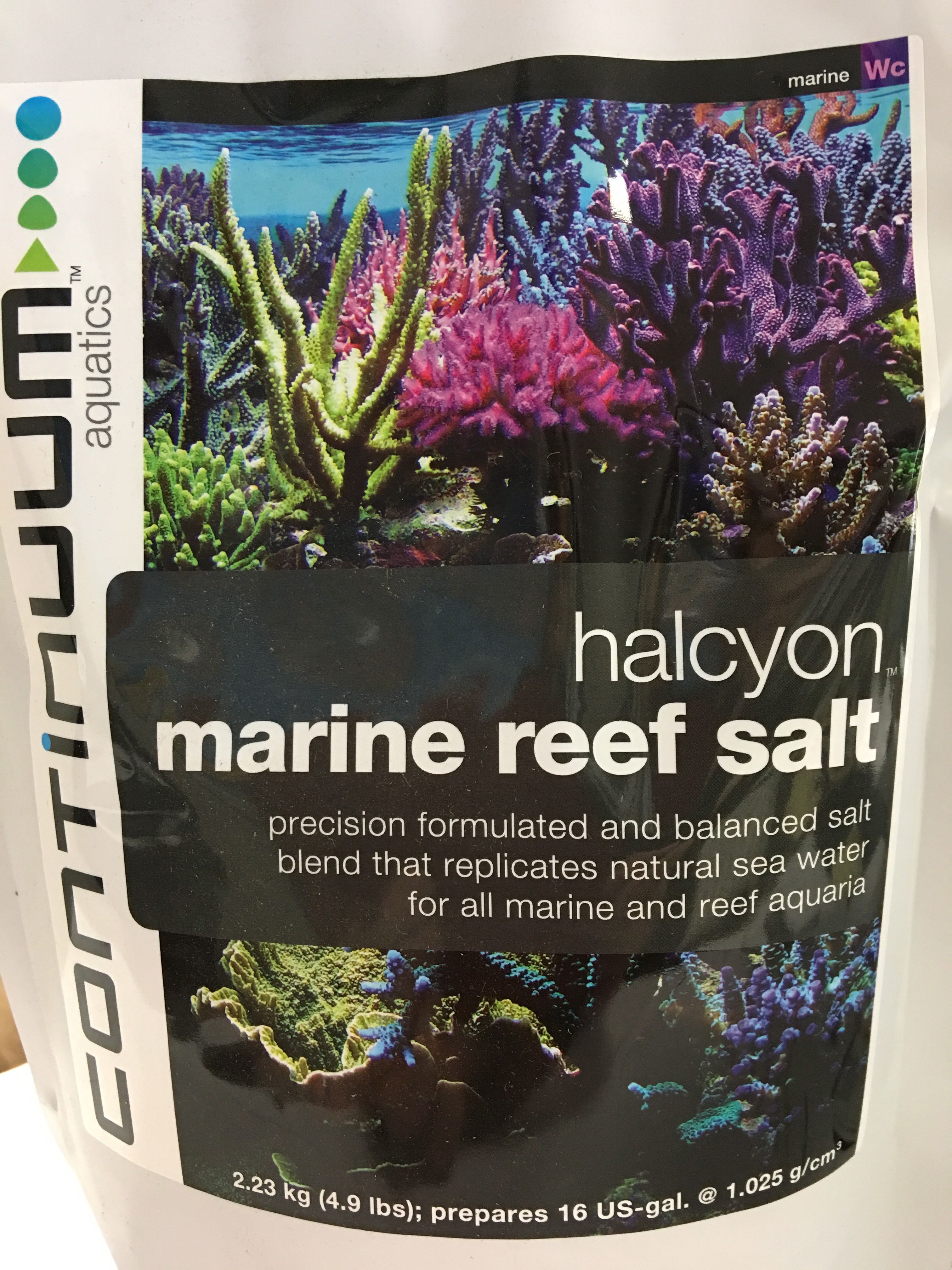Halcyon Reef Salt 16Gal/2.23kg Bag
Halcyon Marine Reef Salt Mix is a precisely formulated and manufactured mix of all of the necessary inorganic components of natural seawater in the proper ratios. It is manufactured in small batches in our own factory under tight quality controls and is not simply another companies product labelled with our brand. It does not utilize any natural seawater desalinization residue or wastes, but is entirely manufactured from reagent grade, pharmaceutical grade, and tested and assayed ingredients. This assures the finest quality salt available anywhere in the world. Halcyon has been developed through decades of testing and experience manufacturing salt mixes, not merely months, as other salts claim. Halcyon combines the highest level of marine chemistry with the utmost knowledge of reef aquarium husbandry.
Halcyon, when mixed as directed, is formulated to provide a salinity of 35 ppt or a specific gravity of 1.026 (temperature corrected), alkalinity of 2.7 meq/l or 7.5 dKH, pH of 8.3, a calcium level of 415 ppm, and a magnesium level of 1,290 ppm. These are perfect values for the keeping and propagating of stony, particularly small polyped stony, corals and other invertebrates and fishes in reef aquariums. Halcyon is well suited for use in all marine and brackish aquariums when specific gravity is adjusted for the needs of the inhabitants.
Use in aquarium keeping:
Continuum recommends a 10 to 20% water change weekly to maintain a healthy reef or marine aquarium. When something is wrong in your aquarium and you cannot put your finger on the problem, a good water change will often help. Water changes export pollutants, replenish nutrients, and tend to normalize the aquarium. Continuum recommends that maintaining calcium levels between 410 and 450 mg/L (ppm), alkalinity between 7 to 11 dKH (2.5 to 4 meq/L), and magnesium levels between 1250 and 1350 mg/L (ppm) in reef aquariums. Note: Aquarists keeping SPS corals should consider keeping alkalinity between 7 and 8 dKH, but certainly no more than 9 dKH (2.5 to 2.86, but not over 3.21 meq/L). Alkalinity is extremely important, as a low alkalinity (below 7 dKH or 2.5 meq/L) will allow rapid pH drops. Continuum recommends checking alkalinity at least once each week and, if need be, supplementing with Reef.Basis KH Buffer to maintain alkalinity levels and consistent pH.
Directions:
In a separate container, measure the exact amount of water that you plan to use and heat it 76 to 78 deg F with a heater prior to adding Halcyon. (Never put less water, add salt and then top up the vat with water. This would result in cloudiness particle formation). Add Halcyon Marine Reef Salt Mix slowly, while running a pump or other mixing device. It is usually a good idea to add half the salt mix, allow to blend and then slowly add the rest in several additions with mixing time between additions. (Do not just dump the salt in and allow to sit on the bottom until it mixes, this is sure to cause cloudiness). Use water that has been purified via carbon and reverse osmosis, deionization or distillation. Important: If using tap water, first use Fraction to remove chlorine, chloramine and ammonia. Add 36 grams of Halcyon for every litre of water. (a little less than half a cup per U.S. gallon). This will yield a salinity of approximately 35 ppt or a specific gravity of 1.026 (temperature corrected). Test the resultant solution with an accurate hydrometer or, preferably, a refractometer and add more water if the salinity is high or more Halcyon if it is low. Allow to stand for a minimum of one hour, but optimally for 24 hours, to allow full pH stabilization. It is advised to use aeration, a power head, or both in the newly prepared mix. Measure the temperature of the solution and add a heater, if necessary, to bring the solution to the same temperature as the aquarium prior to addition. NEVER ADD SALT MIX DIRECTLY TO THE AQUARIUM.
Causes of Cloudiness:
Halcyon is an anhydrous salt, meaning that it is much drier than most salts (which are hydrated and contain water already). If you add it to water too fast, It will cloud.
1. Water too cold. Always heat the water to 76 to 78 deg F before you begin.
2. Adding too much salt or adding it too fast, or just dumping it in and allowing it to lay on the bottom of the container without stirring and agitation. Cloudiness will form under these conditions.
3. Not using the full volume of water. Always use the full amount of water and gradually bring up the salinity in the mixing container, adding the salt over a period of time. If you don't you will get cloudiness.
4. What to do if you have mixed it wrong and it is cloudy: Cloudiness is not dangerous, it is just the formation of carbonates of divalent cations, such as calcium, into tiny particles. When added to the aquarium, it will dissolve over several days. Adding it through a fine filter sock may remove some of the particles and allow them to dissolve unseen, over time.
Caution: Keep out of reach of children. Not for human consumption. Contains anhydrous (dry) salts to replicate seawater, if ingested drink plenty of water, consult your medical practitioner. If in eyes flush with water for 15 minutes, if redness continues, consult your medical practitioner. If on skin flush with water. May cause irritation of sensitive skin. Use gloves when handling.
Code: QCHS16
Brand: Continuum Aquatics
